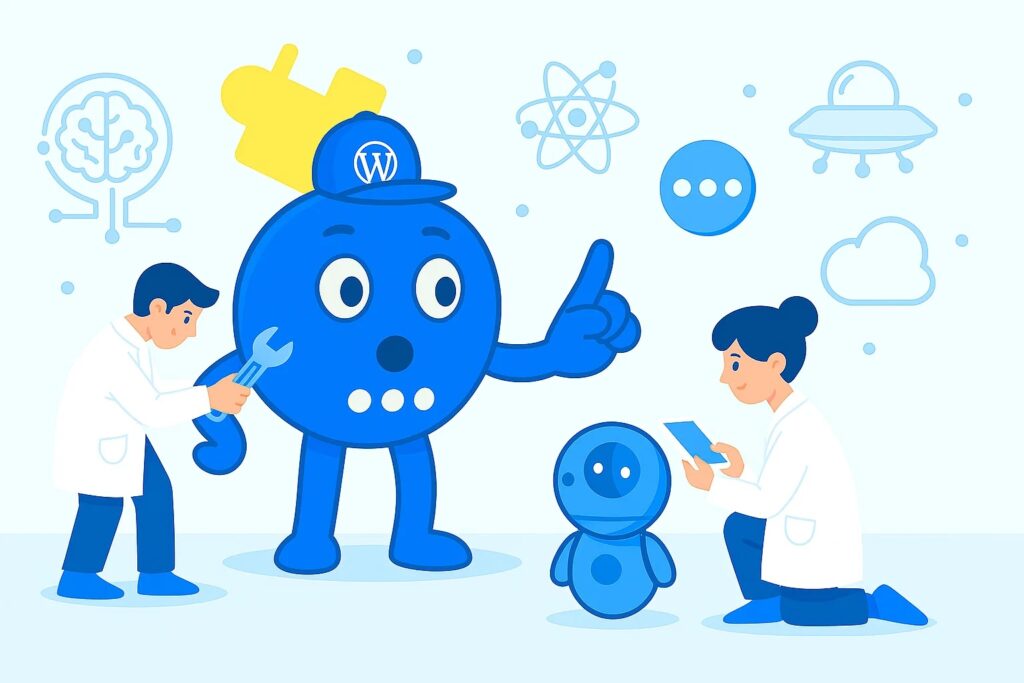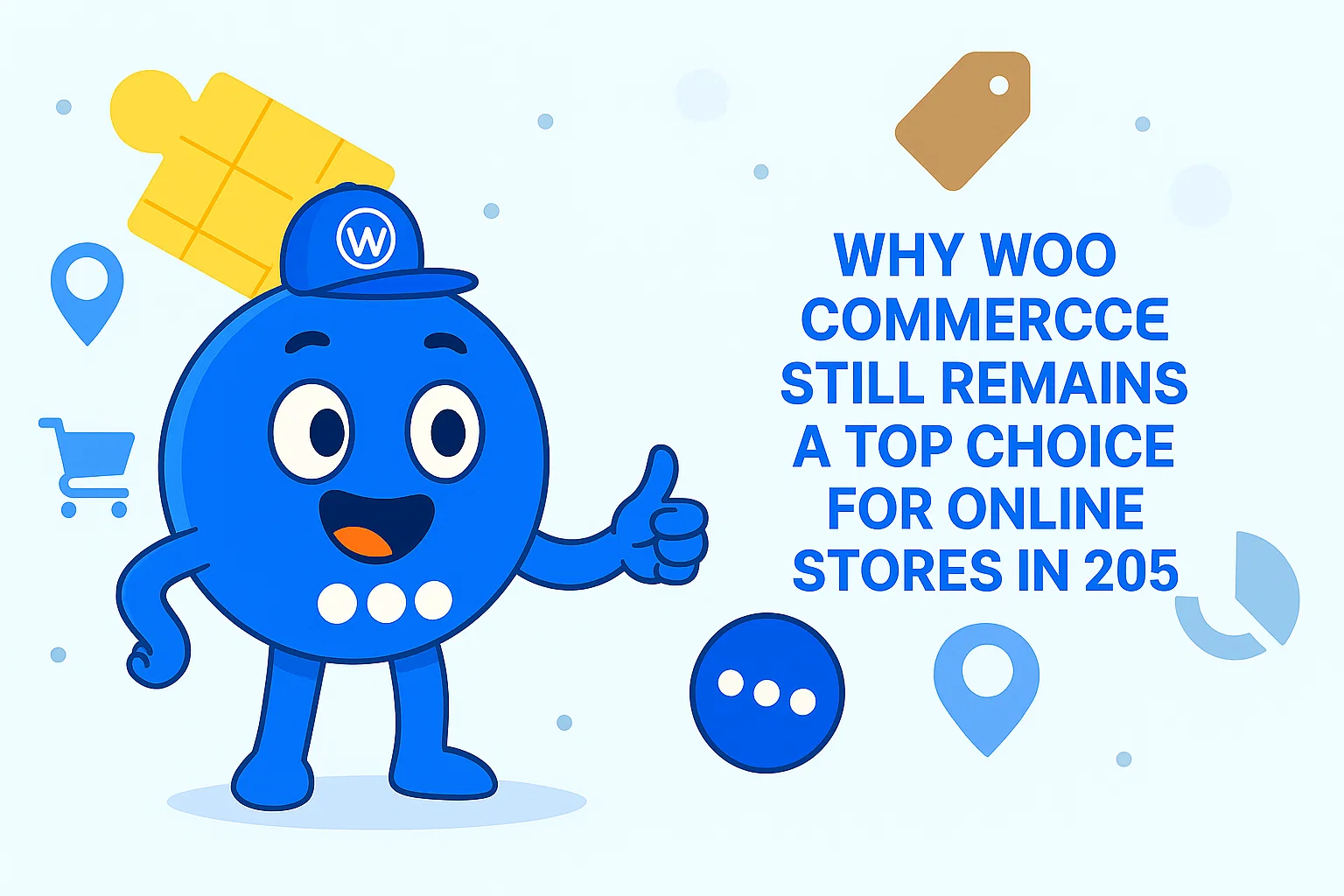Why WooCommerce Still Remains a Top Choice for Online Stores in 2025
In 2025, e-commerce continues to thrive, and choosing the right platform is crucial for businesses to stay competitive. WooCommerce, an open-source e-commerce plugin for WordPress, has been a dominant player in the market for years. But is it still worth it in 2025? With many new players in the e-commerce game, some may wonder if WooCommerce is still a good choice. In this article, we will explore the strengths, weaknesses, and future trends surrounding WooCommerce to help you make an informed decision.
What Is WooCommerce?

WooCommerce is a powerful and flexible e-commerce plugin designed for WordPress websites. It allows users to turn their WordPress site into a fully functional online store. With WooCommerce, businesses can sell physical products, digital goods, and even services.
Some key features of WooCommerce include product management, secure payment processing, inventory tracking, and shipping options. WooCommerce also integrates seamlessly with various payment gateways, making it easier for store owners to process payments globally.
Since its inception, WooCommerce has become the most widely used e-commerce solution for WordPress. It is open-source, meaning that developers can freely customize and extend its functionality with plugins, themes, and custom code. This flexibility, combined with the power of WordPress, has made WooCommerce a top choice for businesses of all sizes.
Read more: Unlock Your WooCommerce Store’s Potential: Essential FAB Features to Skyrocket Sales & Engagement
Why WooCommerce Is Still Worth It in 2025

In 2025, WooCommerce remains a strong contender in the e-commerce space due to several key advantages that continue to appeal to business owners:
- Open-source Flexibility and Customization: WooCommerce’s open-source nature allows developers to fully customize their online stores. Whether you need a unique design, specific features, or complex integrations, WooCommerce provides the freedom to modify the platform as needed. You’re not locked into a predefined set of options, which makes it a great choice for businesses looking for a tailored solution.
- Integration with WordPress: Since WooCommerce is a WordPress plugin, it integrates seamlessly with the world’s most popular content management system. WordPress powers over 40% of websites globally, and WooCommerce taps into this extensive ecosystem. This allows store owners to take advantage of WordPress’s vast library of themes, plugins, and features. Hence, making it easier to manage both content and products in one place.
- Cost-effectiveness for Small to Medium Businesses: WooCommerce is free to install. Even though you may need to invest in paid themes, plugins, or hosting, the initial costs are relatively low compared to other e-commerce platforms. Therefore, it’s a cost-effective solution for small to medium-sized businesses looking to get started in e-commerce without breaking the bank.
- Wide Range of Plugins and Add-ons: WooCommerce boasts an extensive library of plugins and extensions that can add almost any feature imaginable. Whether its advanced shipping options or enhanced marketing tools. The ability to add functionality as needed makes WooCommerce highly scalable, allowing it to grow with your business.
The Benefits of Using WooCommerce

WooCommerce offers a range of benefits that make it an attractive e-commerce platform in 2025:
- User-friendly and Easy to Set Up: One of the major advantages of WooCommerce is its ease of use. Even users with minimal technical expertise can set up and run an online store. The installation process is straightforward. Moreover, WooCommerce integrates with WordPress’s familiar interface, making it easy for users to add products, manage orders, and monitor performance.
- Scalability and Adaptability for Growing Businesses: As businesses grow, so do their needs. WooCommerce offers the scalability necessary to accommodate expanding product catalogs, increased website traffic, and growing transaction volumes. With the ability to add more features, optimize for performance, and upgrade hosting plans, WooCommerce can grow alongside your business.
- Excellent SEO Capabilities for Better Visibility: WooCommerce benefits from WordPress’s strong SEO features. That’s how it allows store owners to easily optimize their site for search engines. With tools like customizable URLs, meta tags, and integration with powerful SEO plugins (like Yoast SEO), WooCommerce makes it easier to improve your store’s visibility on Google, helping to drive organic traffic.
- Secure Payment Gateways and Transaction Options: WooCommerce supports a variety of secure payment methods, including PayPal, Stripe, and traditional credit card processors. The platform complies with the latest security standards, ensuring that both store owners and customers have a safe shopping experience. Additionally, WooCommerce supports multiple currencies and international payment methods, making it ideal for businesses with a global customer base.
Strong Community Support and Resources: WooCommerce has a large, active community of developers, designers, and users. This vibrant ecosystem offers plenty of support through forums, tutorials, and guides. If you run into any issues or need to extend the functionality of your store, it’s easy to find help and resources to solve problems.
Potential Drawbacks of WooCommerce

While WooCommerce offers a host of benefits, there are also some potential drawbacks to consider before committing to the platform:
- Performance Issues with Large-Scale Stores: WooCommerce is well-suited for small to medium-sized stores, but as your business grows and you add more products and traffic, you may encounter performance issues. Large product catalogs and high levels of traffic can slow down your website, especially if your hosting environment is not optimized. For very large-scale stores, more robust solutions may be necessary to maintain performance.
- Requires Technical Knowledge for Advanced Customizations: While WooCommerce is easy to set up for basic stores, advanced customizations often require a good understanding of web development. Customizing the design, adding complex features, or integrating third-party software can require technical expertise, which may pose a challenge for store owners who don’t have a technical background.
- Limited Customer Support Compared to Proprietary Platforms: Unlike proprietary platforms like Shopify, which offer 24/7 customer support, WooCommerce relies on community-driven resources. While the community is large and helpful, there is no centralized, official customer support service. This can be a disadvantage if you run into urgent issues or need immediate assistance.
- Need for Regular Updates and Maintenance: WooCommerce is frequently updated to enhance security, fix bugs, and introduce new features. However, these updates can sometimes cause compatibility issues with themes and plugins. Additionally, maintaining your store by ensuring all components are up-to-date and functioning properly can require ongoing attention and management, which might be time-consuming for busy business owners.
Is WooCommerce Still a Strong Competitor in 2025?

WooCommerce continues to hold its own in the competitive e-commerce market of 2025. While other platforms like Shopify, BigCommerce, and Wix have gained significant traction, WooCommerce remains a powerful contender for several reasons:
- Customization and Flexibility: WooCommerce’s open-source nature allows for endless customization, which is a significant advantage over proprietary platforms like Shopify. Store owners have more control over their site’s design, features, and functionality. Therefore, WooCommerce becomes the top choice for businesses that require a tailored e-commerce solution.
- Cost-Effectiveness for Small and Medium Businesses: WooCommerce is still a highly affordable option for businesses starting out or for those that want to keep costs low. Unlike subscription-based platforms like Shopify, WooCommerce operates on a pay-as-you-go basis, which can be more budget-friendly for many businesses, especially those with fewer financial resources.
- Market Share and Popularity: WooCommerce is still the most popular e-commerce plugin for WordPress, powering millions of online stores globally. Its widespread use speaks to its stability, reliability, and long-term viability. As of 2025, WooCommerce remains the go-to choice for many WordPress users looking to launch an online store.
- Rising Competition: While WooCommerce is still a strong player, newer platforms like Shopify, Wix, and Squarespace offer more out-of-the-box solutions and user-friendly experiences for those who prefer not to deal with customization or technical aspects. However, WooCommerce’s flexibility and scalability continue to make it an appealing choice for businesses with more specific needs or those looking for greater control.
The Future of WooCommerce: What’s Coming in 2025 and Beyond?

As the e-commerce landscape evolves, so does WooCommerce. In 2025, WooCommerce continues to innovate, ensuring it remains a relevant and competitive platform for online businesses. Here are some key developments and future trends to watch:
- Enhanced Performance and Speed Optimizations: One area WooCommerce is focusing on is improving performance, particularly for large stores. With new updates to caching, server-side optimizations, and better integration with content delivery networks (CDNs), WooCommerce aims to provide faster loading times and a smoother shopping experience, even for high-traffic websites.
- Better Mobile Optimization: Mobile shopping continues to rise, and WooCommerce is making strides in ensuring that online stores are fully optimized for mobile devices. With responsive design enhancements and mobile-specific features, WooCommerce is positioning itself as an excellent platform for businesses that want to target mobile users effectively.
- AI and Automation Integrations: WooCommerce is also moving toward integrating more AI and automation features. From personalized product recommendations to automated inventory management, WooCommerce plans to enhance its capabilities to help store owners improve customer experiences and streamline their operations.
- Improved Customer Experience Features: WooCommerce is expected to introduce more features aimed at enhancing the customer journey, such as advanced filtering, intuitive search, and integrated live chat options. These features aim to make shopping easier and more enjoyable for customers, which in turn could lead to higher conversion rates for store owners.
- Ongoing Security Enhancements: As e-commerce security remains a top priority, WooCommerce continues to prioritize robust security measures. From regular updates to PCI-DSS compliance, WooCommerce is committed to maintaining a secure environment for both merchants and customers, which is vital for maintaining trust and credibility in the online marketplace.
Conclusion
So, is WooCommerce still worth it in 2025? The answer largely depends on your business needs, budget, and technical expertise. For many small to medium-sized businesses, WooCommerce remains an excellent choice. Its flexibility, ease of use, cost-effectiveness, and vast range of customization options make it an ideal solution for online stores. Furthermore, WooCommerce’s strong SEO capabilities, wide range of payment integrations, and extensive plugin ecosystem ensure that it can handle a variety of e-commerce requirements.
While it may not be the best fit for everyone—particularly for those looking for a fully managed, hands-off solution like Shopify—WooCommerce continues to be a powerful, adaptable, and competitive e-commerce platform. It is particularly well-suited for businesses that need more control, want to keep costs low, and are ready to take on some technical aspects of site management.
With ongoing improvements in performance, security, and new features on the horizon, WooCommerce is poised to remain a key player in the e-commerce space well into the future. So, if you’re comfortable with WordPress and looking for a highly customizable and scalable e-commerce solution, WooCommerce is still very much worth considering in 2025.







